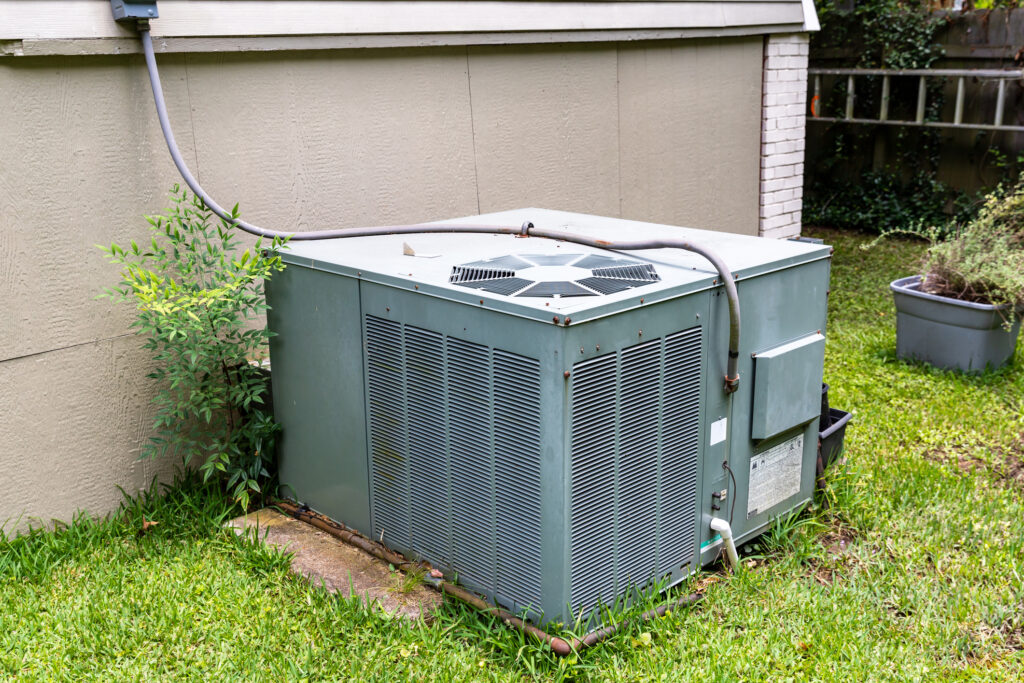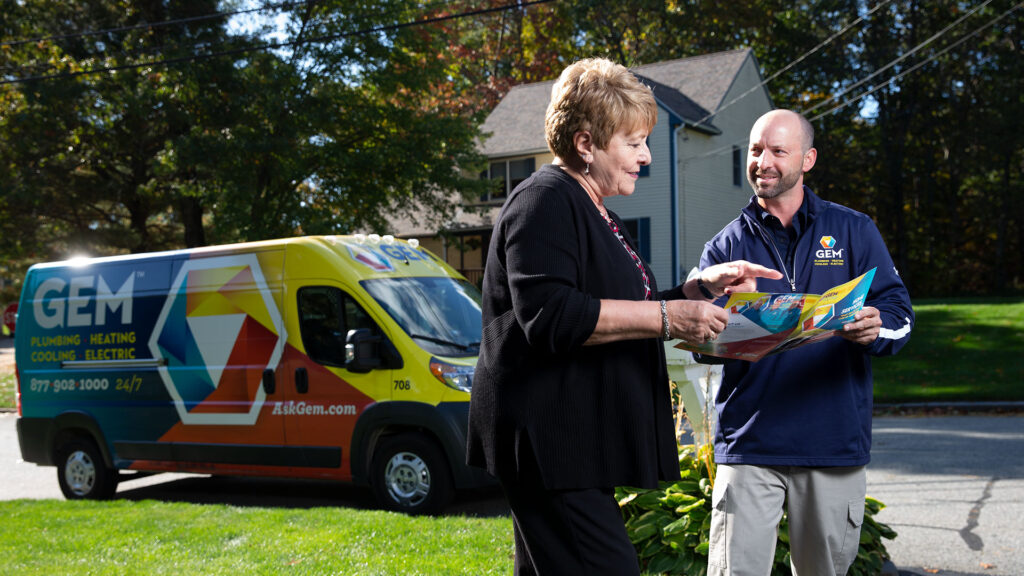Your heat pump is like a 500-piece puzzle: a bit intimidating at first, but once you take a closer look, it’s not so complicated! As a key component of the heating and cooling system in your home, you need to understand your heat pump to take control of your heat and keep your family comfortable. Knowing the ins and outs of your system (and what to do when it breaks down) can help keep you warm and happy.
The Breakdown: What Is A Heat Pump?
At the most basic level, a heat pump is a system powered by electricity that can cool and heat your space — a double-duty system, if you will.
Your heat pump works year-round to keep you comfortable. During warm summer months, it pulls out the heat in your home’s air and ushers it outside. In the cold winter months, it does the opposite: it collects heat from the outdoor air and brings it into your home.
Pieces & Parts
Let’s break it down a little further, so you get to know how the parts of your system work together. A heat pump is a two-part system with an outdoor unit (the heat pump unit) and an indoor air handler. These two parts work together to distribute heat or cool air into your home, depending on the season and the corresponding setting on the control board (“Cooling”, “Heating”, or “Defrost”).;
When your heat pump’s working, many parts are in action:
- Refrigerant: cooling liquid or substance that circulates in your system
- Compressor: holds and moves refrigerant
- Evaporator/Condenser Coils: uses the refrigerant to either heat or cool the air
- Thermostatic Expansion Valves (TEVs): regulates refrigerant flow and levels
- Refrigeration lines: connect the outdoor and indoor units
- Ducts: large pipes through which warm or cool air is distributed throughout your home
What Can Go Wrong?
You’ll need to be aware of the risks and common issues that can occur with your heat pump, and how to handle them when they arise, in order to stay comfortable in your home.
Most Common Heat Pump Issues
There are a number of issues that can occur with your heat pump, many of which can impact one another. Here are some of the most common problems:
- Your heat pump is blowing the wrong air setting (cold while in heat/heat while in cold)
- Your heat pump is always running
- Your heat pump will not turn on
Why These Things Happen (And What To Do)
As you might expect, there are a number of causes behind common heat pump problems. Here are some of the top signals to watch for:
Heat pump is blowing the wrong air setting
If your heat pump is blowing cold air in the winter or hot air in the summer, it’s likely due to one of the following factors:
- Your heat pump’s outdoor unit is blocked or frozen
- Your heat pump’s parts or filter are dirty or clogged
- Your thermostat is set incorrectly
- Your heat pump refrigerant is running low
Fortunately, these are all things that you can check on, and for the most part, take care of on your own! Go to the source of each of these issues, and inspect it:
- Do you see something blocking your outdoor unit or see ice on it? Clear it off.
- Do the parts or the filter look dirty? Replace the filter.
- Is your thermostat set to the right setting? Change it.
- Is your refrigerant running low? Give it a refill (with some help from a pro).
Heat pump is always running
If your heat pump is running non-stop regardless of the weather, check for these common culprits:
- Thermostat setting is incorrect: If this is the case, try resetting the thermostat. If that doesn’t resolve the issue, you’ll need to contact a professional. You may have a faulty thermostat on your hands.
- Inclement weather (very hot or cold): If the weather has been extreme, your system may be working overtime to keep you comfortable. In this case, it’s normal for your heat pump to keep running, and your system should be able to handle it!
- Broken compressor: The compressor controls how much power is going to your heat pump at a given time. If this part is broken, your system may run non-stop. In order to fix the issue, you’ll need a new part, or potentially a heat pump replacement.
Heat pump won’t turn on
If your heat pump won’t turn on or isn’t running, there are a few things that may be at fault:
- Loss of power to the unit: This issue likely goes beyond the system itself. You’ll need to have it professionally serviced or replaced.
- Thermostat setting is incorrect: If this is the case, try resetting the thermostat, and if the issue is not resolved, you’ll need to contact a professional. You may have a faulty thermostat on your hands.
- Broken starter capacitor: The capacitor works to bring power via electrical charge to the motors of your heat pump. If this part is broken, you’ll need to have it replaced.
How To Avoid Heat Pump Problems
In order to prevent issues with your heat pump, you need to do your best to take care of it! That’s what makes routine maintenance on your system so important.
Importance Of Maintenance
There are a few things that you can do yourself to take care of your heat pump regularly, like keeping it clean and clear of debris and changing its filters. Beyond that, there are some things that only the pros can handle — and that’s where you’ll need to call them in!
Having your heat pump professionally serviced and maintained once a year can be the difference between a recurring problem and a hefty bill or smooth-sailing during the warmest and coldest months.



